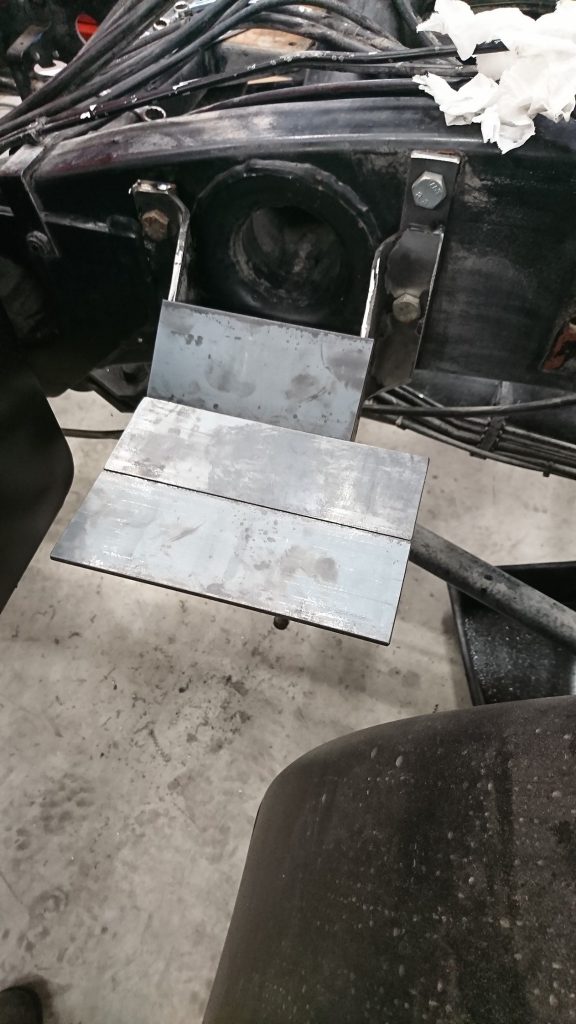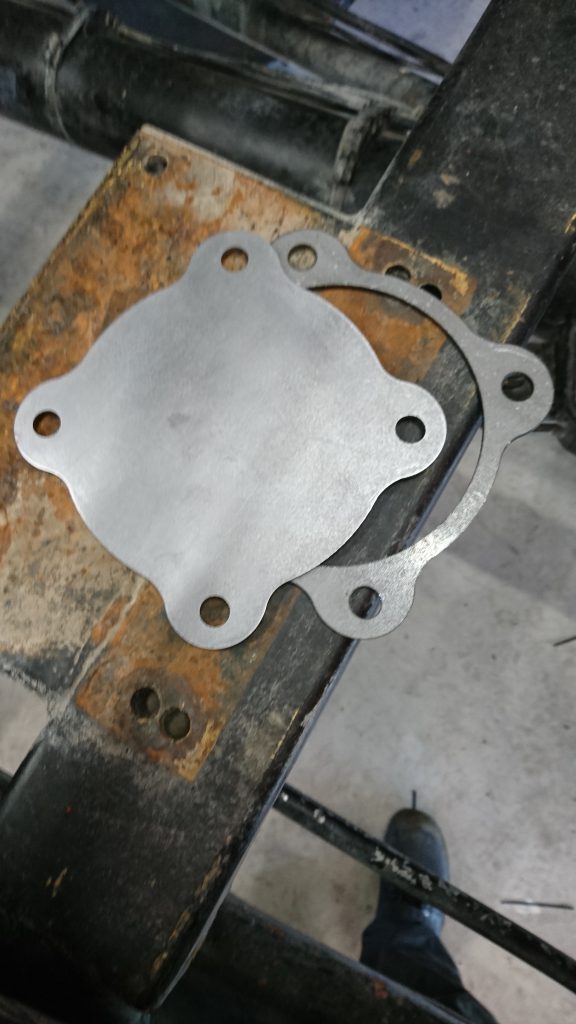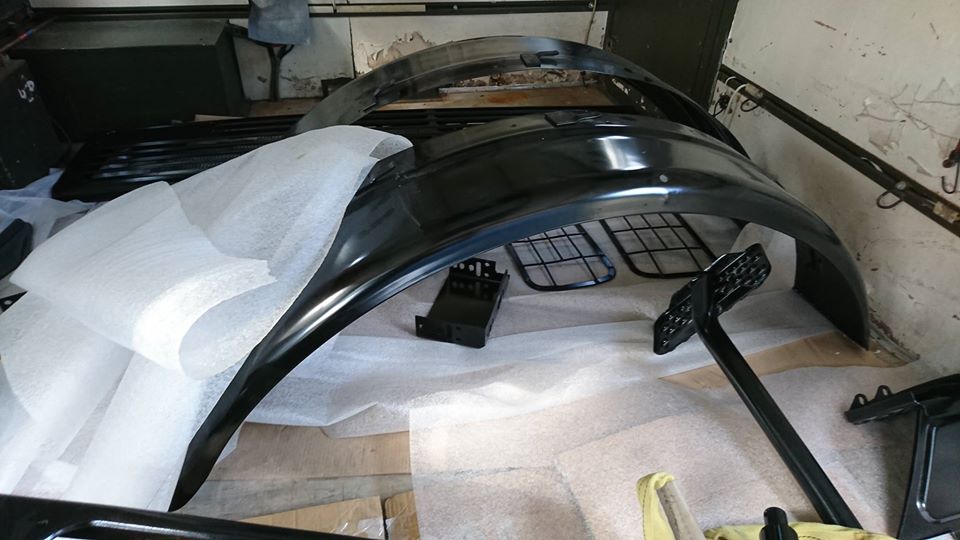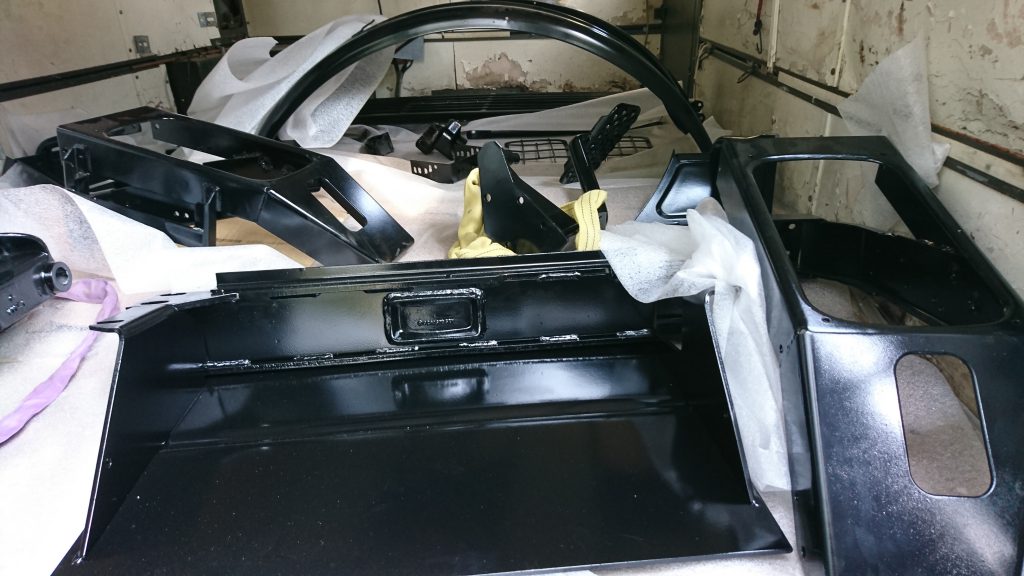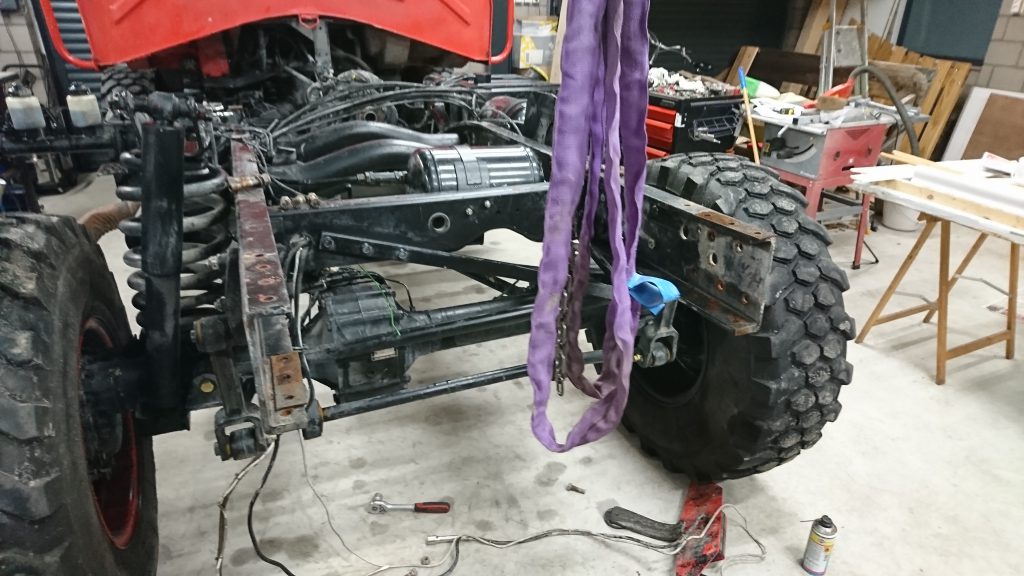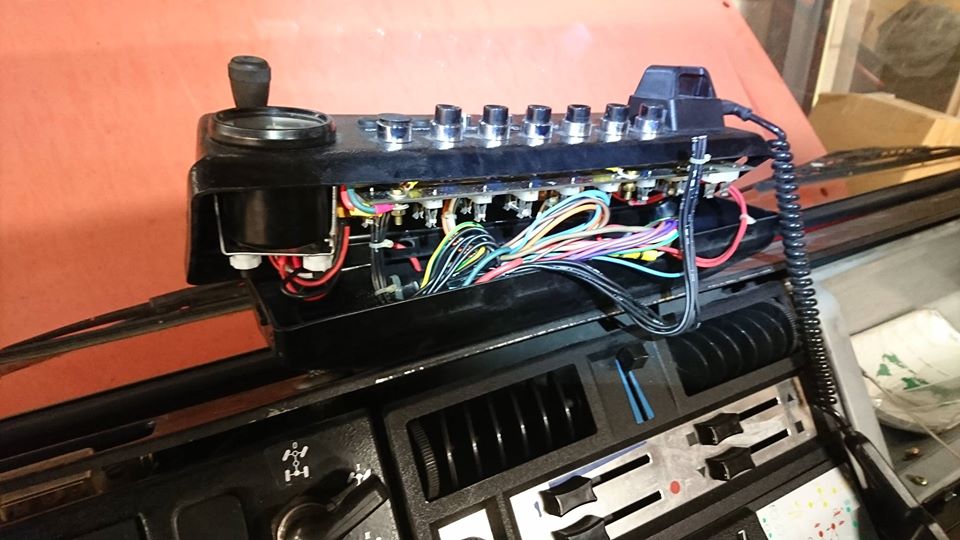Unimogs have a very flexible chassis, excellent when driving in heavy terrain and it’s one of the reasons these vehicles are so good at it.

But of course, the living area, the cabin, shouldn’t twist as the chassis does, it will destroy the cabin. This requires a so-called ‘subframe’. The idea is that this will connect the cabin to the chassis without relaying the chassis movement to the cabin.

We’ll connect the subframe via a 4-point attachment system to the chassis, in a diamond shape. The front and rear connection are left/right flexible due to a pivot point, while the middle connections are forward flexible due to a rubber bushing.

Martijn drew (part of) the Unimog chassis and designed a subframe. the idea was that the cabin would be mounted on top of this frame.
Later, we we heard the frame could be integrated in the floor, so the cabin would be slightly lower. And as it should be mounted as low as possible, we decided to do so.
After having all the parts laser-cut, it’s time to assemble!












